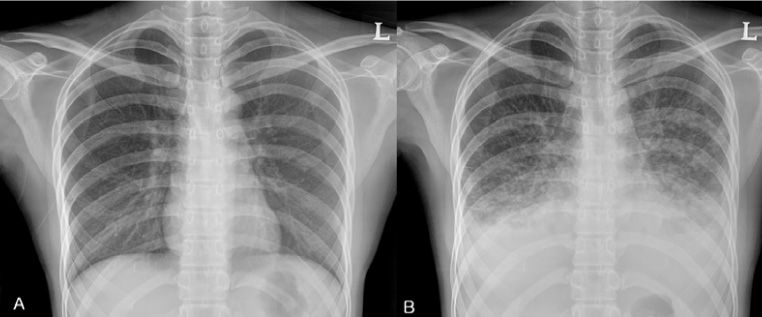Infect Chemother.
2008 Aug;40(4):207-211. 10.3947/ic.2008.40.4.207.
Time Kill Studies of Antibiotics against a Nalidixic Acid Resistant Salmonella enterica serotype Typhi
- Affiliations
-
- 1Department of Internal Medicine, Chosun University College of Medicine, Gwangju, Korea. jhchung@mail.chosun.ac.kr
- 2Department of Emergency Medicine, Chonnam University Hospital, Korea.
- KMID: 2170235
- DOI: http://doi.org/10.3947/ic.2008.40.4.207
Abstract
-
BACKGROUND: We recently encountered a case of typhoid fever in a patient who visited us after travelling India. The patient received ciprofloxacin therapy, but developed typhoid pneumonia and typhoid hepatitis, and nalidixic acid resistance Salmonella Typhi (NARST) was identified. The aim of this study was to assess the in vitro efficacy of several antimicrobial combinations, which are commonly used in clinical practice.
MATERIALS AND METHODS
Time-kill studies were performed for a clinical NARST strain to evaluate synergy. Synergy was defined as a > or = 2 log10 decrease (100-fold drop) in CFU per mL at 24 hours by a drug combination compared to the most active constituent.
RESULTS
The combination regimen of cefotaxime plus ciprofloxacin significantly reduced the bacterial counts (> 3 log CFU) at 3/4 MIC and at 24 hours compared to the ciprofloxacin or cefotaxime alone and showed synergistic effect against a NARST strain.
CONCLUSION
In conclusion, our time-kill studies showed that ciprofloxacin plus cefotaxime was the best in vitro combination against a NARST. This combination may improve efficacy compared to fluoroquinolone alone in typhoid fever patient with NARST. Time kill studies with more NARST strains and clinical studies are required to test the relevance of our findings
Keyword
MeSH Terms
Figure
Reference
-
1. Frenck RW Jr, Nakhla I, Sultan Y, Bassily SB, Girgis YF, David J, Butler TC, Girgis NI, Morsy M. Azithromycin versus ceftriaxone for the treatment of uncomplicated typhoid fever in children. Clin Infect Dis. 2000. 31:1134–1138.
Article2. Threlfall EJ, Ward LR, Skinner JA, Smith HR, Lacey S. Ciprofloxacin-resistant Salmonella typhi and treatment failure. Lancet. 1999. 353:1590–1591.
Article3. Parry CM, Ho VA, Phuong le T, Bay PV, Lanh MN, Tung le T, Tham NT, Wain J, Hien TT, Farrar JJ. Randomized controlled comparison of ofloxacin, azithromycin, and an ofloxacin-azithromycin combination for treatment of multidrug-resistant and nalidixic acid-resistant typhoid fever. Antimicrob Agents Chemother. 2007. 51:819–825.
Article4. Nkemngu NJ, Asonganyi ED, Njunda AL. Treatment failure in a typhoid patient infected with nalidixic acid resistant S. enterica serovar Typhi with reduced susceptibility to ciprofloxacin: a case report from Cameroon. BMC Infect Dis. 2005. 5:49.
Article5. National Committee for Clinical Laboratory Standards. Approved standard M2-A8. Performance standards for antimicrobial disk susceptibility tests. 2003. 8th ed. Wayne, PA: NCCLS.6. National Committee for Clinical Laboratory Standards. Approved standard M7-A6. Methods for dilution antimicrobial susceptibility tests for bacteria that grow aerobically. 2003. 6. Wayne, PA: NCCLS.7. Chuang YC, Liu JW, Ko WC, Lin KY, Wu JJ, Huang KY. In vitro synergism between cefotaxime and minocycline against Vibrio vulnificus. Antimicrob Agents Chemother. 1997. 41:2214–2217.
Article8. George M, Eliopoulos RC, Moellering Jr. Lorian V, editor. Antimicrobial combination. Antibiotics in laboratory medicine. 1996. 4th ed. New York: Williams & Wilkins;338.9. Wain J, Hoa NT, Chinh NT, Vinh H, Everett MJ, Diep TS, Day NP, Solomon T, White NJ, Piddock LJ, Parry CM. Quinolone-resistant Salmonella typhi in Viet Nam: molecular basis of resistance and clinical response to treatment. Clin Infect Dis. 1997. 25:1404–1410.
Article10. Truong QC, Ouabdesselam S, Hooper DC, Moreau NJ, Soussy CJ. Sequential mutations of gyrA in Escherichia coli associated with quinolone therapy. J Antimicrob Chemother. 1995. 36:1055–1059.
Article11. Rupali P, Abraham OC, Jesudason MV, John TJ, Zachariah A, Sivaram S, Mathai D. Treatment failure in typhoid fever with ciprofloxacin susceptible Salmonella enterica serotype Typhi. Diagn Microbiol Infect Dis. 2004. 49:1–3.
Article12. White NJ, Parry CM. The treatment of typhoid fever. Curr Opin Infect Dis. 1996. 9:298–302.
Article13. Butler T, Frenck RW, Johnson RB, Khakhria R. In vitro effects of azithromycin on Salmonella typhi: early inhibition by concentrations less than the MIC and reduction of MIC by alkaline pH and small inocula. J Antimicrob Chemother. 2001. 47:455–458.
Article14. Frenck RW Jr, Nakhla I, Sultan Y, Bassily SB, Girgis YF, David J, Butler TC, Girgis NI, Morsy M. Azithromycin versus ceftriaxone for the treatment of uncomplicated typhoid fever in children. Clin Infect Dis. 2000. 31:1134–1138.
Article15. Saha SK, Talukder SY, Islam M, Saha S. A highly ceftriaxone-resistant Salmonella typhi in Bangladesh. Pediatr Infect Dis J. 1999. 18:387.
Article16. Chapman JS, Georgopapadakou NH. Routes of quinolone permeation in Escherichia coli. Antimicrob Agents Chemother. 1998. 32:438–442.
Article17. Otsuki M, Nishino T. The synergic effects of quinolones and oral cephem antibiotics on Serratia marcescens. J Antimicrob Chemother. 1996. 38:771–776.
Article18. Kim DM, Lym Y, Jang SJ, Han H, Kim YG, Chung CH, Hong SP. In vitro efficacy of the combination of ciprofloxacin and cefotaxime against Vibrio vulnificus. Antimicrob Agents Chemother. 2005. 49:3489–3491.
Article
- Full Text Links
- Actions
-
Cited
- CITED
-
- Close
- Share
- Similar articles
-
- A Case of Typhoid Fever to Failed Ciprofloxacin, Infected in Korea
- An Imported Case of Typhoid Fever Refractory to Ciprofloxacin Treatment
- Epidemiology of Salmonella enterica Serotype Typhi Infections in Korea for Recent 9 Years: Trends of Antimicrobial Resistance
- Three cases of ciprofloxacin treatment failure in imported typhoid fever
- Quinolone susceptibility and genetic characterization of Salmonella enterica subsp. enterica isolated from pet turtles



